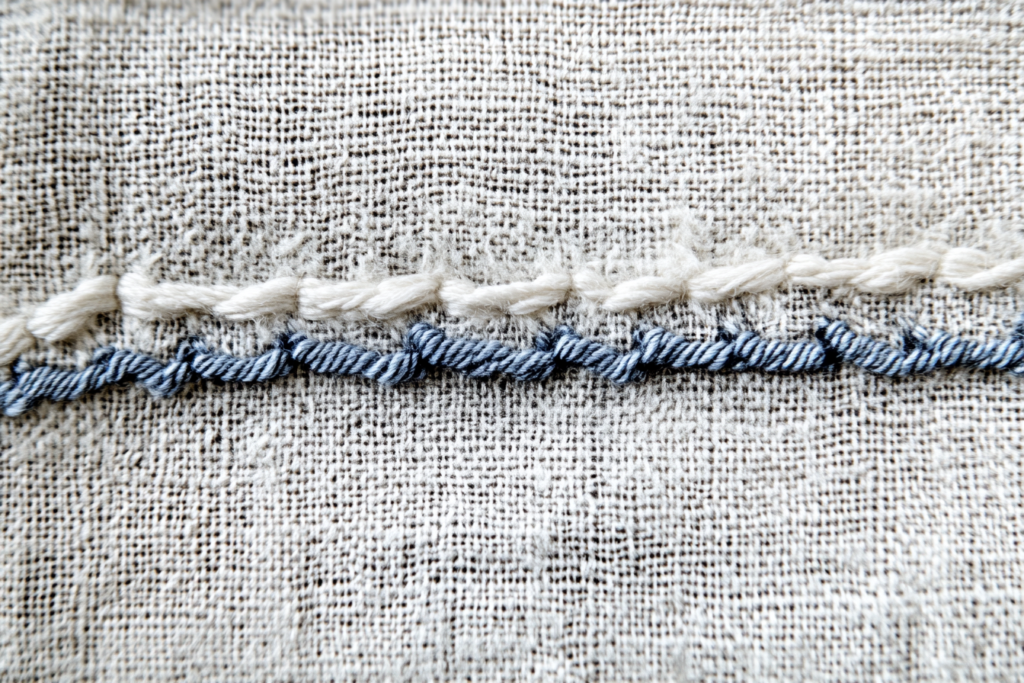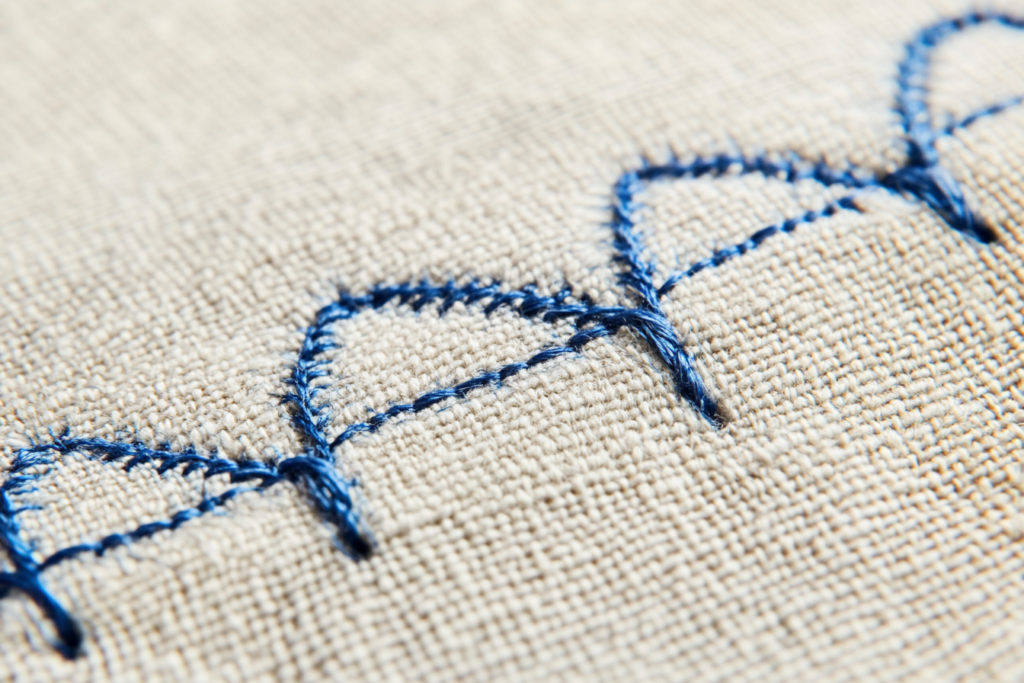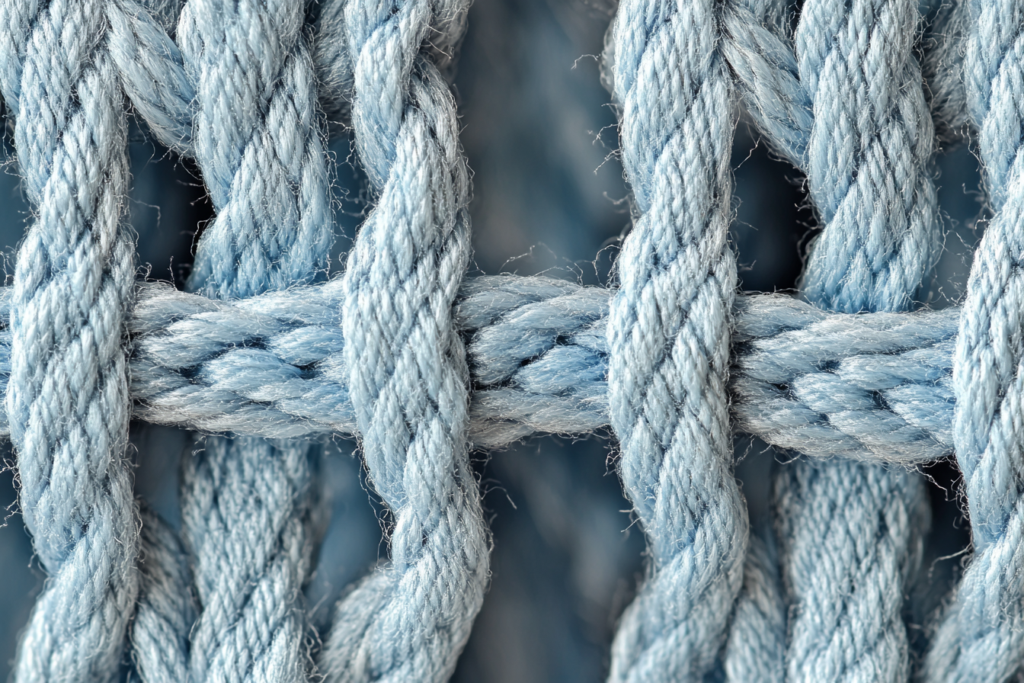Safety Stitches: The Essential Stitch for Locking Raw Edges
Meta Description: Safety stitches are a combination of 401 chain stitch and 500-style stitching used to lock raw edges in garment construction. Learn how safety stitches help to prevent fraying and improve garment durability.
What is a Safety Stitch?
A safety stitch is a specialized type of stitch used in garment manufacturing to reinforce seams and lock raw edges in place. This stitching method combines a 401 chain stitch with 500-style stitching. It’s commonly used in the garment industry to prevent fabric from unraveling, adding both durability and a neat finish to the edges of a garment.
This method is often used for lightweight and medium-weight fabrics, where the edges are at risk of fraying due to wear or washing. Safety stitches are a popular choice for industrial sewing, as they offer both strength and versatility in edge-finishing techniques.


Key Features of a Safety Stitch
- Combination of Stitches: The safety stitch combines the 401 chain stitch with the 500-style stitch, which provides a strong, secure finish that prevents fraying.
- Locking Raw Edges: One of its primary functions is to lock raw edges in place, preventing them from unraveling during use or washing.
- Durable: The dual stitching technique ensures a strong, durable seam that stands up to the wear and tear of daily use.
- Used on Woven and Knit Fabrics: Safety stitches are suitable for both woven fabrics and stretch fabrics like knits, making them versatile for various garment types.
Why Use a Safety Stitch?
- Prevent Fraying The primary reason to use a safety stitch is to secure raw fabric edges and prevent fraying. Over time, friction and washing can cause fabric edges to unravel, but safety stitches lock the threads in place, ensuring the garment maintains its structure.
- Improve Durability Garments that use safety stitches have increased durability. The locking effect of this stitch helps to reinforce the seam and prevent it from coming undone, especially in high-stress areas like armholes, side seams, and waistbands.
- Versatile Finish Safety stitches are effective on both woven fabrics and knits, making them a go-to for a variety of garment types. Whether you’re working with a lightweight cotton blouse or a stretchy T-shirt, this stitch helps to maintain fabric integrity.
- Professional Look The clean, finished look provided by safety stitches makes them ideal for professional garment production. The secure, neat edge ensures that no raw fabric is left exposed, contributing to the overall aesthetic of the garment.
How to Make a Safety Stitch
- Prepare the Fabric: Place the fabric pieces together and align the raw edges of the seams.
- Sew the Seams: Begin by sewing the main seam of the garment, either using a straight stitch or another preferred method.
- Apply the Safety Stitch: Use a sewing machine equipped with the necessary presser foot for a safety stitch. This machine will apply the chain stitch (401) along with the 500-style stitch to lock the raw edges.
- Trim the Excess Fabric: If necessary, trim the seam allowance after applying the safety stitch to ensure that there is no excess fabric that might cause bulk or a messy finish.
- Press the Seams: Finally, press the seam to ensure that the safety stitch lies flat and the edges are secure.
Where Are Safety Stitches Used?
📌 Garment Manufacturing Safety stitches are commonly used in the garment industry to finish raw edges in mass production. They are especially helpful in areas that require added durability, such as cuffs, collars, waistbands, and side seams.
📌 Stretch Fabrics The safety stitch is highly beneficial when working with knit fabrics or any stretchy material. It provides the necessary stretchability while securing the raw edges to avoid stretching out of shape.
📌 Home Sewing Projects For home sewists looking for a professional finish, safety stitches can be applied using machines equipped for the task. They are perfect for finishing seams in dresses, skirts, and shirts.
Pros and Cons of Safety Stitches
| Pros | Cons |
|---|---|
| Prevents Fraying – The lock on raw edges prevents fabric from unraveling. | Requires Specialized Equipment – Not all home sewing machines can produce safety stitches, so an industrial machine may be necessary. |
| Durable and Secure – The double stitch makes seams stronger. | Can Be Time-Consuming – The process can take longer compared to simpler stitching methods. |
| Versatile – Suitable for both woven and knit fabrics. | Visible Stitches – The stitch may be visible on the exterior, which may not suit all design aesthetics. |
| Ideal for Stretch Fabrics – Works well for garments made of knits or fabrics that need flexibility. | Requires Skill to Master – Proper technique and tension are important for achieving the best results. |
Conclusion: The Versatility and Benefits of Safety Stitches
Safety stitches are an essential technique in garment manufacturing and home sewing projects alike. With their ability to lock raw edges securely, they prevent fraying and unraveling while reinforcing seams for increased durability. While this technique may require specialized equipment and skill, the results are well worth the effort for anyone looking to produce garments with a professional, long-lasting finish.
If you’re looking to improve your sewing projects and make sure your seams are both sturdy and neat, consider incorporating safety stitches. They provide a high level of functionality and versatility, particularly when working with fabrics that are prone to fraying or stretching.



